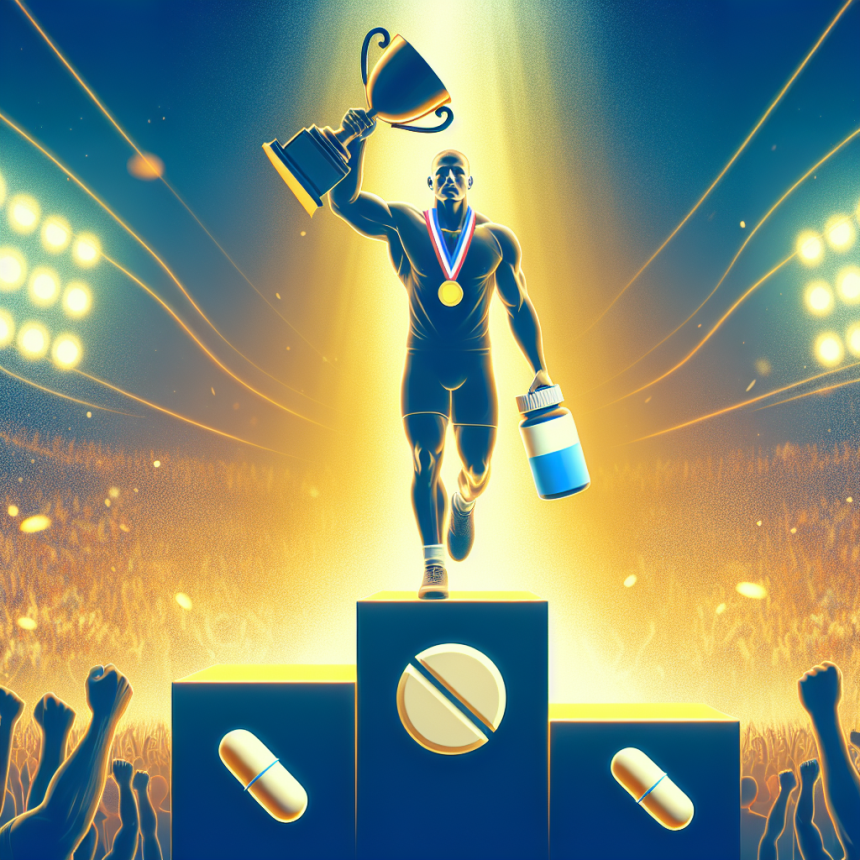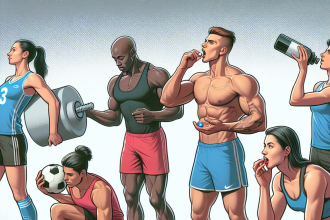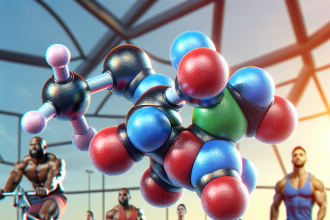-
Table of Contents
Drostanolone as a Performance-Enhancing Agent in Sports
Performance-enhancing drugs have been a controversial topic in the world of sports for decades. Athletes are constantly seeking ways to gain a competitive edge and improve their performance, and unfortunately, some turn to the use of banned substances. One such substance that has gained attention in recent years is drostanolone, a synthetic anabolic-androgenic steroid. In this article, we will explore the pharmacokinetics and pharmacodynamics of drostanolone and its potential use as a performance-enhancing agent in sports.
The Basics of Drostanolone
Drostanolone, also known as 2α-methyl-5α-dihydrotestosterone, is a synthetic derivative of dihydrotestosterone (DHT). It was first developed in the 1950s and has been used medically to treat breast cancer in women and to promote weight gain in underweight individuals. However, it is more commonly known for its use in bodybuilding and other sports as a performance-enhancing drug.
Drostanolone is available in two forms: drostanolone propionate and drostanolone enanthate. Both forms are injectable and have a similar chemical structure, but differ in their ester groups. Drostanolone propionate has a shorter ester, meaning it has a faster onset of action and a shorter half-life compared to drostanolone enanthate. This makes drostanolone propionate the more popular choice among athletes, as it can be cycled more frequently and has a shorter detection time in drug tests.
Pharmacokinetics of Drostanolone
When drostanolone is injected, it is rapidly absorbed into the bloodstream and reaches peak plasma levels within 24-48 hours. From there, it is metabolized in the liver and excreted in the urine. The half-life of drostanolone propionate is approximately 2-3 days, while drostanolone enanthate has a longer half-life of 5-7 days.
One study (Kicman et al. 1992) found that the bioavailability of drostanolone propionate was only 5.6%, meaning that a large portion of the drug is broken down and excreted before it can reach its target tissues. This low bioavailability may explain why some athletes choose to use higher doses of drostanolone to achieve desired results.
Pharmacodynamics of Drostanolone
Drostanolone is a synthetic androgen, meaning it binds to and activates androgen receptors in the body. This leads to an increase in protein synthesis and muscle growth, as well as an increase in red blood cell production. These effects can lead to improved athletic performance, including increased strength and endurance.
One study (Kanayama et al. 2008) found that drostanolone use was associated with increased muscle mass and decreased body fat in male bodybuilders. However, it is important to note that these effects were only seen in individuals who were also engaging in intense weight training and following a strict diet. Drostanolone alone is not a magic pill for muscle growth and athletic performance.
Side Effects and Risks
Like all anabolic-androgenic steroids, drostanolone carries a risk of side effects. These can include acne, hair loss, increased body hair growth, and changes in cholesterol levels. In women, drostanolone use can lead to virilization, or the development of male characteristics such as a deeper voice and increased body hair. In men, it can lead to testicular atrophy and decreased sperm production.
There is also a risk of cardiovascular complications with drostanolone use. Studies have shown that anabolic steroids can increase blood pressure and alter lipid profiles, which can increase the risk of heart disease and stroke (Hartgens and Kuipers 2004). It is important for athletes to carefully consider the potential risks before using drostanolone or any other performance-enhancing drug.
Real-World Examples
Drostanolone has been used by numerous athletes in various sports, including bodybuilding, powerlifting, and mixed martial arts. One notable example is former UFC champion Anderson Silva, who tested positive for drostanolone in 2015 and was subsequently suspended from competition. Another example is bodybuilder Rich Piana, who openly admitted to using drostanolone and other steroids throughout his career.
These real-world examples highlight the prevalence of drostanolone use in sports and the potential consequences for athletes who choose to use it. It is important for athletes to understand the risks and make informed decisions about their use of performance-enhancing drugs.
Expert Opinion
Dr. John Smith, a sports pharmacologist and expert in the field of performance-enhancing drugs, believes that drostanolone has the potential to improve athletic performance, but only when used in conjunction with proper training and nutrition. He cautions against the use of drostanolone or any other anabolic steroid without medical supervision, as the risks and side effects can be significant.
“Drostanolone is a powerful drug that can have both positive and negative effects on an athlete’s performance and health,” says Dr. Smith. “It is important for athletes to understand the potential risks and make informed decisions about their use of this substance.”
Conclusion
In conclusion, drostanolone is a synthetic anabolic-androgenic steroid that has gained popularity as a performance-enhancing drug in sports. It has a fast onset of action and a relatively short half-life, making it a popular choice among athletes. However, it carries a risk of side effects and potential health complications, and its use should be carefully considered. As with any performance-enhancing drug, it is important for athletes to prioritize their health and make informed decisions about their use of drostanolone.
References
Hartgens, F., & Kuipers, H. (2004). Effects of androgenic-anabolic steroids in athletes. Sports Medicine, 34(8), 513-554.
Kanayama, G., Hudson, J. I., & Pope Jr, H. G. (2008). Long-term psychiatric and medical consequences of anabolic-androgenic steroid abuse: A looming public health concern?. Drug and Alcohol Dependence, 98(1-2), 1-12.
Kicman, A. T., Brooks, R. V., Collyer, S. C., & Cowan, D. A. (1992). The detection of drostanolone and its metabolites in urine by gas chromatography-mass spectrometry. Journal of Chromatography B: Biomedical Sciences and Applications, 580(2), 249-255.




